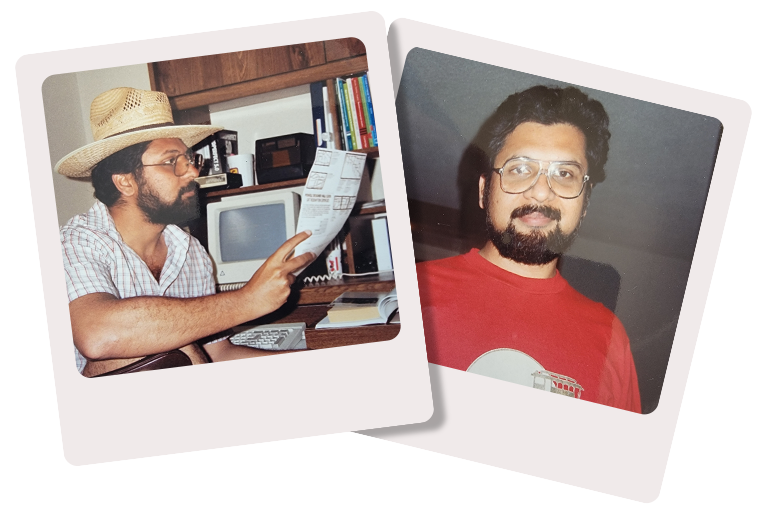Critics push you the hardest. That’s why we hired one of the DET’s most vocal critics, Antony John Kunnan, a leader in English assessment testing, to join our team, and our effort to transform testing for good.
From test taker to test maker
Growing up in Bangalore, Antony was a strong English student, but it was a while before he discovered the field of language assessment. In 1993, he won Educational Testing Service (ETS)’s “Best Dissertation award in language assessment”(completed at UCLA in 1991) for his work studying the relationship between learning English and test performance, before joining the University of Michigan as a postdoctoral fellow.

Though Antony set his sights on becoming an expert in language assessment, he continued to be subjected to tests himself, including the TOEFL, the Test of Spoken English, and the GRE. In 1987, he transferred to UCLA’s applied linguistics PhD program to work as a research assistant/test developer on their ESL placement exam… but not before he took that very exam himself!.
“They wouldn’t waive the requirement for any reason. So one day I took the ESLPE, and the next day, I was working on it.”
More tests followed: UCLA’s Subject A exam in order to qualify to teach writing, and then, years later, the U.S. Naturalization Test (which includes an English test) to qualify for U.S. citizenship. By 2000, Antony had taken 7 language proficiency exams, and had written a 150 page dissertation in English!
“There is a sense of humiliation there,” Antony insists. “How many tests do you need to take to prove your English proficiency?”
Can the testing industry change?
Antony says his own lived experience as an international student, as well as his years spent working alongside international scholars, has solidified his commitment to ensuring that tests give everyone an equal chance at success.
“The bottom line is, every test should be fair. Otherwise, why would you take it in the first place?”
Fast forward to 2015: he and co-author Elvis Wagner heard about a new kind of English proficiency test made by Duolingo, and decided to write a review.
“I thought, it’s computer adaptive? Who does that, when every other test is linear? An hour? Who does that, when every other test takes several hours? And $49? Who does that, when every other test is hundreds of dollars? This is all revolutionary.”
However, while the review praised the features of the Duolingo English Test that make it maximally accessible — and even recommended that competitor tests adopt some of its practices — at the time, Antony and his co-author did not feel there had been enough research conducted on the test to recommend it for use in university admissions.
Pro tip: Hire your best critics
“I wrote that review with the hope that the Duolingo English Test would be able to challenge existing tests, with better content, better test tasks, and more supporting research evidence,” Antony explains.
This is exactly why, in 2020, he joined Duolingo’s team of assessment scientists, who collaborate to produce this innovative, digital-first assessment that is now accepted by over 2,500 programs worldwide.
One example of this innovation is interactive reading, a new item type recently added to the test in which test takers must first complete missing words and letters in a short passage, before highlighting different portions of the text in response to various questions. Compared to the traditional, linear format where you read a passage and then answer a set of questions, Antony says “it’s a much closer representation of what students would be doing in a university setting.”

The future of the Duolingo English Test
While the DET is known for its innovative use of AI, Antony and his colleagues are very mindful of the tools they choose to use. “We cannot get excited about some new technology just because it is available; it has to fundamentally serve our interests of putting out a high quality test that is valid, reliable, and fair, and providing a good test taker experience.”
For Antony, the unprecedented combination of cutting edge AI and deep human expertise has the potential to unlock a new level of accessibility and interactivity on the test, and that’s what makes working on the DET so exciting!